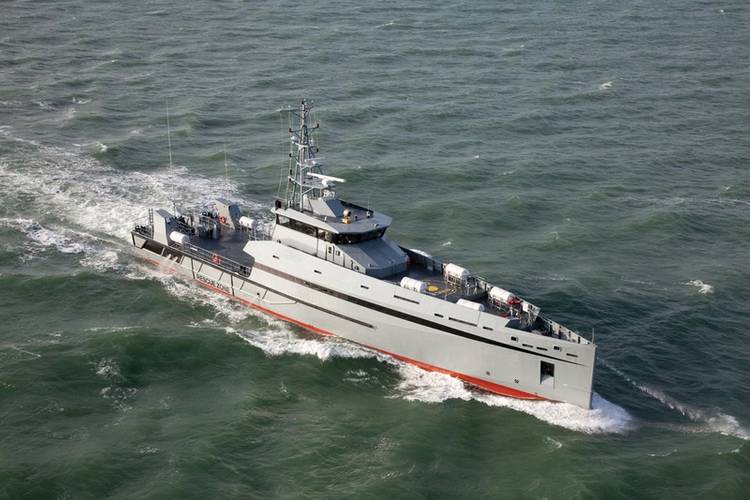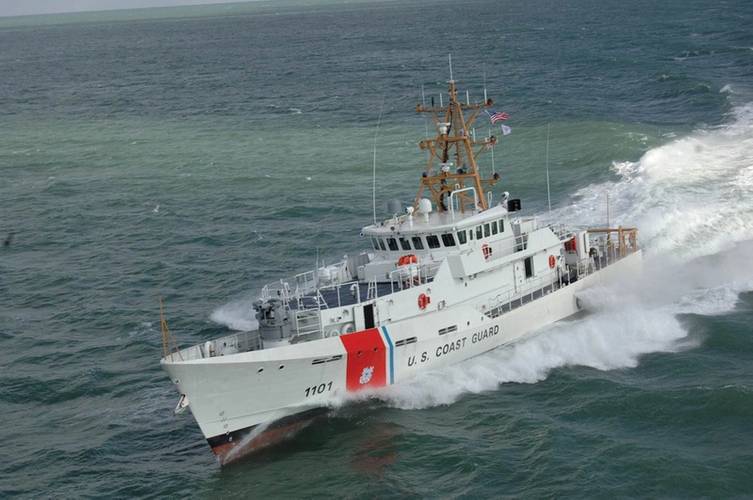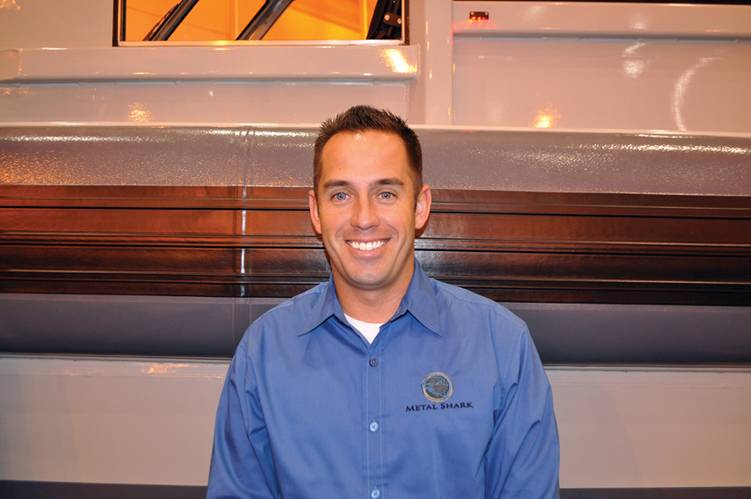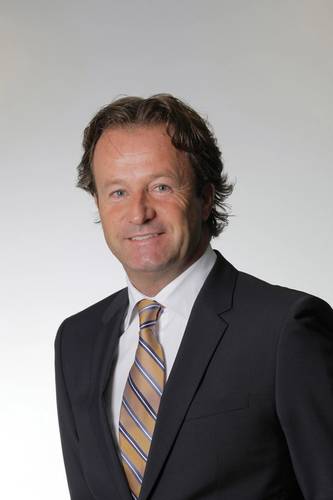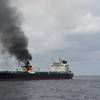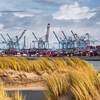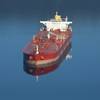Hands Across the Water
U.S. firms leverage Netherlands-based Damen Shipyard’s vessel designs and technical support.
For nearly 40 years, Damen Shipyards Group in the Netherlands has licensed its vessel designs and technical support to yards owned by other companies. The business practice showcases not only the depth, variety and strength of the Damen portfolio, but also the reputation and reliability of its designs.
Since 1969, Damen Shipyards has delivered more than 5,000 vessels, typically averaging 160 vessel deliveries annually. With as many as 200 hulls always in stock to ensure a short delivery time, they also manage to complete more than 1,500 repair jobs in the same time span.
Established in 1927, Damen Shipyards today has a leading position in shipbuilding with more than 9,000 employees and a presence in 35 countries. Closer to home for MarineNews readers in the United States, Damen has notably signed agreements with Bollinger Shipyards, Great Lakes Shipyard, Metal Shark Aluminum Boats, Blount Boats, Gulf Coast Shipyard Group, Horizon Shipbuilding and Derecktor Shipyards. The reasons why became evident during interviews with Damen and just a few of its North American partners.
Proven Hull Designs
“The chief advantage of these agreements is the use of our proven hull designs,” Jan van Hogerwou, Florida-based North America manager at Damen Shipyards, said last month. Damen designs have been tested many times over. “We build large series of vessels for our stock and/or on speculation,” he said. “The designs that companies request depend on a yard’s size and type, and they range from small pilot and crew boats to our latest 80-metric-ton, Bollard pull tugs and complex OSVs and OCVs.”
Designs for military-specification, offshore patrol vessels have been offered to at least two U.S. yards, he said. “Our designs are licensed for markets that include harbor towage, terminal work, offshore and onshore wind crew transfers, offshore and onshore wind-supply services and naval patrol duties.” In addition to its more than 800 naval engineers, Damen has a large research department and can customize vessels to end users’ needs. “We provide a large number of commercially off-the-shelf designs,” van Hogerwou said.
“Years of production and engineering experience go into our designs, and we share them with our clients and partners through our DTC or Damen Technical Cooperation,” he said. “DTC covers a wide scope of services, which are often sold as separate packages, but they’re akin to our design licensing.”
“Cooperation can be through a relatively small agreement for basic design drawings, or it can be under a medium-sized contract, providing packages of high-quality, proven components--within Jones Act boundaries for the United States,” van Hogerwou explains, adding, “Large agreements can include building assistance, like blue- and white-collar-related training at Damen headquarters, yard consultancy, even yard building, along with advice about optimizing a yard’s strategy to reduce building time and costs.”
The Jones Act, or Merchant Marine Act of 1920, requires that vessels operating between U.S. ports be owned by American citizens, built in U.S. shipyards and operated by U.S. mariners. The act prevents heavy reliance on foreign ships, and it supports domestic construction and repair industries and sees that U.S. vessels and their crews are ready to serve defense needs. As it turns out, many of the designs and stock hull forms produced by Damen fit nicely into the needs and business models of the domestic waterfront. And, to the extent allowed by U.S. Coast guard interpretations of “U.S. built” requirements, some components and parts can also be sent to U.S. yards, as well. How that all plays out is as compelling as the products that emanate from these unique relationships.
License agreements include royalty fees
“In licensing, we fit both the yard’s and Damen’s purposes,” van Hogerwou said. “We have project-based license agreements with Blount and Derecktor, for example. And we have more general licenses for a number of specified vessel types with Great Lakes and Metal Shark. Since we’ve built our vessels many times before, we can assist U.S. shipyards with our knowledge during different construction phases,” he said. “We can send supervisors, who will advise a local yard how to best build a Damen-design vessel, quality- and time-wise.”
“The structure of our license agreements is very straightforward, and they’re for an open period of time,” van Hogerwou said. “Except for some slight differences, all yards have signed the same agreement for a small, one-time design fee for a 3-D engineering package and reoccurring royalties per built vessel.” Damen can’t discuss how much it charges shipbuilders under these accords because that’s sensitive, commercial information related to ongoing projects, he said. That being said; the contract agreements – whatever their make-up – are becoming increasingly popular on this side of the pond and Damen remains enthusiastic about what they could bring next.
Great Lakes couples Damen’s expertise with its own
Great Lakes Shipyard in Cleveland, Ohio first signed an accord with Damen in April 2014 for five years, with an option to extend. “Our agreement gives us access to Damen’s entire portfolio of proven designs,” Joe Starck, president of Great Lakes, said last month. “It allows us to market any of these vessel designs to our own Jones Act customers in the United States. Combining that with our 116 years of experience, our world-class facility, state-of-the-art equipment, intelligent engineers and skilled craftsman is a competitive advantage to our customers.”
The Midwest company has established its Great Lakes Shipyard’s Damen Series. “As more current and prospective customers become aware of this partnership, we’ll start to build vessels under the license arrangement,” Starck said. “The agreement has definitive terms but I’m not at liberty to discuss them.” Damen’s proprietary agreements are typically based on a project’s size, case-by-case, and involve royalty fees, he said.
Great Lakes designs custom solutions for its clients, Starck said. “Damen can furnish components, parts and equipment to be used in a vessel, if required by and if economically beneficial to our customer to the extent permitted under the Jones Act,” he said. “Damen provides pricing to our shipyard for any components, parts or equipment requested.” In addition to design and engineering services, the Dutch company can supply on-site construction supervision, he said.
Bollinger bases its USCG cutters on a Damen design
Bollinger Shipyards LLC in Lockport, La. was the first U.S. company to produce vessels from Damen designs on a large scale. In January, Bollinger delivered to the U.S. Coast Guard its twelfth, Sentinel-class Fast Response Cutter, based on Damen’s Stan Patrol Boat 4708 design. The vessel has a flank speed of 28 knots; the latest command, control and communications technology; and a stern launch system for its 26-foot cutter boat. According to the Coast Guard, the biggest modification in the cutters from the Damen 4708 prototype was the addition of a stern ramp for launching and recovering a small boat.
In late February, the Coast Guard exercised a contract option with Bollinger for two more Sentinel-class FRCs. That brought to 32 the number of FRCs that the Guard has ordered from Bollinger, based on the Damen design. And it completed the Coast Guard’s $1.48 billion, phase one of its FRC acquisitions. Bollinger was awarded its first Sentinel-class FRC contract by the Coast Guard in late 2008.
The FRC vessels replace the 1980s-era, problem plagued 110-foot Island class cutters, and have been repeatedly called ‘operational game changers’ by the Coast Guard. And, when it came time to replace those vessels, the Coast Guard’s then newly formed and wobbly-legged acquisition team insisted on one thing in particular: a reliable, proven hull that would remove as much risk as possible from the process. Ultimately they turned to Bollinger and a Damen-designed hull form.
Separately, the race to build the Coast Guard’s next-generation Offshore Patrol Cutter (OPC) is on, but Bollinger, like the other finalists, isn’t saying much else. The Bollinger approach – Damen (proven, durable hull forms) and Gibbs & Cox for design (extensive U.S. government, Coast guard and U.S. Navy experience) – presents a compelling case to the Coast Guard’s decision team.
Metal Shark signed with Damen in December
“Our licensing agreement with Damen, announced in December, allows us to offer an incredibly diverse portfolio of proven Damen designs, in addition to our own designs,” Chris Allard, president of Metal Shark in Jeanerette, La., said last month. “Our agreement is for five years, at which point it can be renewed as long as both parties want to continue it.”
“Depending on a project’s particulars, we can use Damen-supplied, standardized components or we can build from our own materials,” Allard said. “We’re offering all Damen designs up to 80 meters. Our Damen offerings are to be produced at our Franklin, Louisiana yard, with direct access to the Gulf of Mexico.” In addition to supplying Metal Shark with 3D design files, specifications and detailed build information, Damen can provide on-site project management and supervisory personnel for each project’s duration, Allard said.
Damen reigns in construction know-how
For each of Damen’s DTC contracts worldwide since 1977, licensing has been part of it, van Hogerwou said. “Our earliest one, providing drawings/engineering packages, was to a client in Africa,” he said. “In the last 15 years, we’ve entered into a number of pure license agreements with U.S. yards for construction of Damen-design vessels.” The company that mastered the practice of quick(er) delivery of new build vessels, leveraging the corporate financial strength that allows Damen to stockpile ‘spec’ hull forms, might just be coming to America.
“Damen is vastly experienced in building designs at our 32 worldwide-positioned shipyards,” he said. “We can advise a U.S. yard during the bidding process and assist it during a vessel’s construction by sending supervisors with specific knowledge about how to effectively build these designs. Our assistance is fully geared to a yard’s preferences and can include DTC products, in addition to the design and license agreement.” Other traditional design studios and naval architect firms can’t offer as much know-how to shipbuilders as Damen does, van Hogerwou said.
Operating shipyard facilities, partner yards and affiliated businesses throughout Europe, and in Turkey, South Africa, Cuba, Brazil, the United Arab Emirates, Qatar, China, Vietnam, Singapore, Indonesia and Australia, Damen has a distinctly international flavor in its varied, but proven business model. While it is fair to ask why the firm would open that experience and knowledge base to others, the practice simply provides opportunities that eventually come full circle to fatten the Netherlands-based company’s bottom line.
Hands across the water: it’s a simple concept, and one – based on the popularity of the licensing deals just in the United States alone – which is clearly a ‘win-win’ for all parties involved. This is one (business) case where it really is true that when the tide comes in, all the boats float – on both sides of the big pond.
(As published in the April 2015 edition of Marine News - http://magazines.marinelink.com/Magazines/MaritimeNews)








